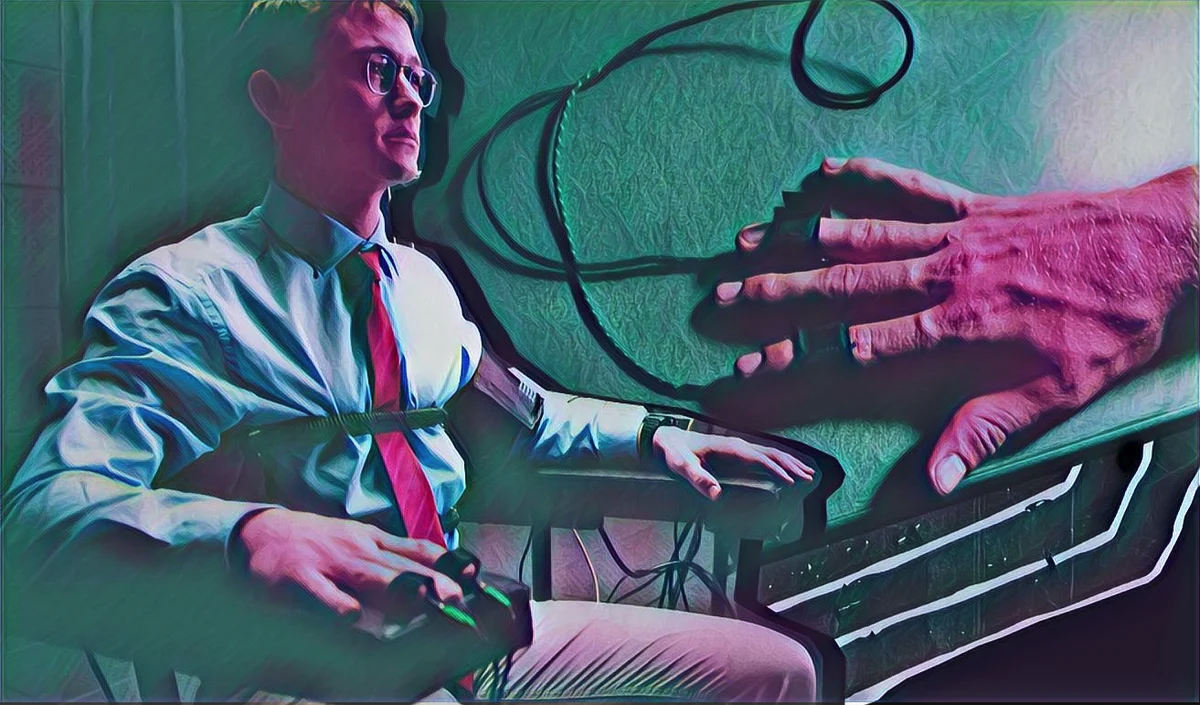Teacher
Professional
- Messages
- 2,670
- Reaction score
- 817
- Points
- 113

As much as we would not like to completely algorithms the activity of the profiler-verifier, this is hardly realizable. Of course, there is a recurring phase in our work, the steps that we go through and the rules that we follow. However, 100% of the sign of a lie, after seeing which one could confidently assert about the insincerity of the interlocutor, as you already know, does not exist. Fortunately or unfortunately, we do not grow noses like Pinocchio when we cheat. In no part of the body will we see the absolutely true criterion of involvement. On one basis, we will not be able to say whether a person is lying or not. Lie detection is always aimed at collecting information from different channels. Although there are many stereotypes about how a liar betrays himself, from scratching his nose and ending with averting his eyes from the interlocutor. If everything were so simple, there would not be so many deceived people, and so many people in the field of verification. It would be enough to fix one feature and make a decision. But no, you need to take into account the context and see the big picture. For example, when we begin to conduct a conversation with a candidate for an interview, we do not evaluate his nervousness, the occurrencegesture adapters and uneven breathing as signs of information hiding. Any person needs time to adapt to a new situation. However, we evaluate the sequence of the appearance of signs of lies through different channels: the state of the body, behavior, speech.
You've probably heard that there are micro-expressions that indicate true and hidden emotion, emblematic leaks that are double bindings, and speech patterns that are specific signs of deception. It is not an easy task to “catch” or notice a micro-expression during a test or just a conversation with a person, and then interpret it correctly. Moreover, a person may have his own mannerisms , and I am now talking not about the trend in European art of the 16th century, but about the prevailing features of the behavior of the person, the “habits” of the person. Emblematic leaksalso manifest themselves far less often than we would like, and for some people they are constant accompanying communications. Recall at least the convulsively twitching shoulders of Zhirinovsky, or the middle finger of a Soviet teacher pointing to the inscription on the blackboard, or the emblem of admiration bordering on delight, which is expressed in denying shaking of the head with the subtext "It was incredible! "In the books of Paul Ekman, everything is described clearly and simply. However, in practice, having found leaks in the face or body, we understand that this is not always an indicator of "100% sign of a lie." And, of course, speech. Not to confuse a person's "Jewish" habit of asking a counter question in response to a question, or the reflection of the metaprogramming pole "General"
In this regard, it is worth mentioning that lie detection begins with identifying the baseline of behavior. Baseline Behavior (BLP ) is a person's behavior in a normal setting when talking about neutral topics that do not cause stress or emotional reactions in them. Simply put, this is the norm, the "zero mark", from which you will start when verifying a person's words. Indeed, lie detection starts with comparing two behaviors. This is a search for change.
We had a case in practice when we were asked to find out if a girl was faithful to her boyfriend, if she was cheating on him. This girl in her normal state was constantly swinging her leg, seemingly demonstrating nervous behavior. But that was her BLP. When we asked her about the connection with another man, her leg sharply froze and did not move until the end of the conversation on this topic. The main appeal of this remark - with the help of simple unemotional questions "about nature, about the weather", find out what is included in the usual style of the interlocutor's behavior.
The components of BLP include such external parameters as: skin color, eye behavior, gestures, habitual postures, breathing characteristics, temperature characteristics, facial habits and mannerisms, speech habits, voice characteristics, latent response time, speed of answering a question, behavioral characteristics ... Only after identifying BLP do we move on to presenting a test stimulus to a person. And only after collecting statistics, after a set of "critical mass" of signs, we can make a conclusion about the manifestation of the phenomenon of deliberately hidden information.
In practice, we came across such “deceitful” elements of the baseline of behavior, such as: left-handed illustrators, systematic one-sided shrug of the shoulder, congenital asymmetry of the face in the form of a contemptuous smile, the emotion of fear on the face as a basic facial pattern, basic rapid blinking, adaptive gestures manifested in any context, the liar's speech patterns as speech habits, health problems leading to the activation of ANS signs, indicative of stress, and with many others. We could make a wrong judgment if we were evaluating only the fact that such elements of behavior were manifested. Fortunately, we remember that in lie detection we are interested in changes, deviations from BLP. Therefore, do not try to find a fern flower, observe your opponent and objectively evaluate his reactions in the aggregate.
